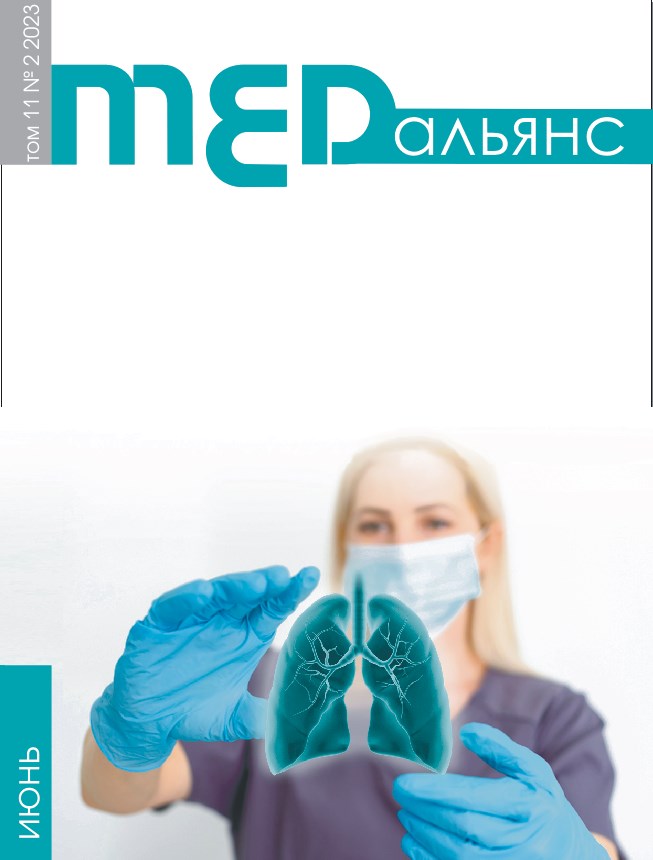Abstract
Chronic obstructive pulmonary disease (COPD) is the third cause of death in the world, from which 3.23 million people died in 2019 according to the World Health Organization. In 2020, J.M. Leung, C.X. Yang, A. Team et al. demonstrated that the expression of ACE-2 in bronchial epithelial cells was significantly increased in patients with COPD compared to the control group. Current smoking was also associated with higher expression of ACE-2 compared to former smokers and never smokers. A number of studies cite data of negative impact of COPD on the course of a new coronavirus infection. In our work, 99 patients with COPD and a new coronavirus infection were examined: 24 women and 75 men (mean age of 69.1±10.8 years). The aim of the work was to determine the features of radiological patterns and the course of a new coronavirus infection in patients with different phenotypes of chronic obstructive pulmonary disease. At admission to hospital 7.1% of patients had CT-0, 20.2% — CT-1, 41.4% — CT-2, 24.2% — CT-3, and 7.1% — CT-4. The maximum degree of lung tissue damage (for the entire period of hospital stay): 3.0% of patients — CT-0, 18.2% — CT-1, 24.2% — CT-2, 38.4% — CT-3, 16.2% — CT-4. 11.1% of patients developed pulmonary embolism, 2.0% — deep vein thrombosis. 28.3% of patients had secondary infection, 24.2% — sepsis, 13.1% — ARDS, 16.2% — hydrothorax, 3.0% — pneumothorax. 41.4% of patients needed a ventilator, 33.3% of patients had a fatal outcome. Statistical analysis showed that a new coronavirus infection in patients with bronchitis phenotype of COPD was more severe than in patients with emphysematous and mixed phenotypes. Also, patients with bronchitis phenotype had a higher risk of a greater maximum degree of lung tissue damage (for the entire period of hospital stay) compared with patients with emphysematous and mixed COPD phenotype.

